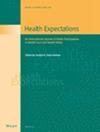Processes Underpinning Successful Co-Design: Lessons From a Digital Health Project
Abstract
Background
Co-design helps to align research with end-user needs, but there is no consistent method for reporting co-design methodology and evaluation. We share our experiences co-designing the Love Your Brain digital platform for stroke prevention. We evaluated the core attributes that guided our co-design approach, including recruitment, focus group coordination, participant engagement and satisfaction.
Methods
Online co-design focus groups were conducted fortnightly (May 2023 to March 2024) with two cohorts (health knowledge experts and community members; n = 8 sessions per cohort) to design the content and structure of Love Your Brain. Snowballing methods and purposive sampling were used to recruit participants in Australia. Coordination involved tracking the time spent by the research team for one round of focus groups. Participant engagement was measured through focus group attendance and survey feedback and analysed using descriptive statistics and thematic analysis. Count and length of verbal and/or written contributions during focus groups were summarised with descriptive statistics as a measure of engagement, with differences between cohorts assessed using χ2/Wilcoxon rank-sum tests. Participant satisfaction was evaluated using survey responses and input at a final evaluative focus group.
Results
Sixteen health knowledge experts (clinicians/researchers) and 28 community members expressed interest, of which 10 health knowledge experts and 12 community members (including 9 people with lived experience of stroke) participated. Conducting two identical focus groups required 29 h of project manager/coordinator time, 8–11 h for facilitators and 6.5–8.5 h for chief investigators. Most participants (86%) attended ≥ 5/8 focus groups. Engagement was enhanced through pre-reading material, structured/well-organised focus groups and experienced facilitators. All participants contributed at each focus group, with varying levels of input. Health knowledge experts preferred written contributions over verbal contributions and wrote longer messages compared to community members. Community members spoke for a longer duration than health knowledge experts. Participant satisfaction was high, with participants reporting that the research team ‘always valued our opinions’. Importance was placed on a final evaluative focus group, and participants stated that their contributions were incorporated into the final product.
Conclusion
Our research emphasises relationships between coordination, participant engagement and satisfaction and the importance of considering resourcing requirements for successful co-design of digital health projects.
Patient or Public Contribution
People with lived experience, including caregivers of people with stroke, and members of the public, participated in the co-design focus groups. The Love Your Brain Management Committee includes people with lived experience of stroke who contributed to the oversight of this study and the preparation of this manuscript.


 求助内容:
求助内容: 应助结果提醒方式:
应助结果提醒方式:


